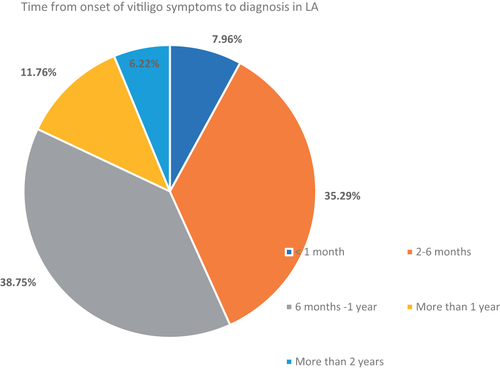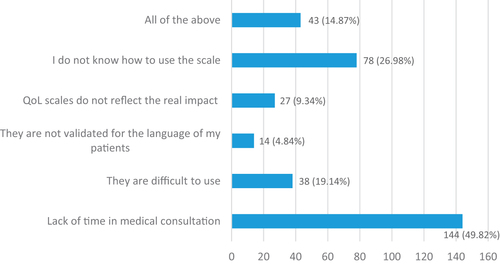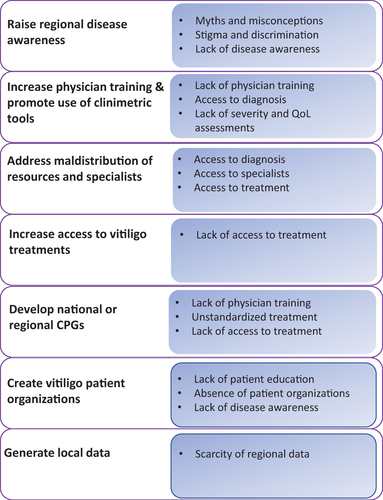Figures & data
Table 1. Characteristics of survey sample.
Figure 1. (a,b) A typical patient journey for a person with vitiligo in Latin America. (a) Depicts the journey to diagnosis. (b) Depicts the treatment journey. PCP: primary care physician; LA: Latin America; UV-NB: ultraviolet narrow band; PUVA: psoralen + ultraviolet A. +‘Healers,’ cosmetologists, pharmacists. *Vitamin D analogs, furocoumarins, antioxidants, topical JAK inhibitors. **Methotrexate, cyclosporine, azathioprine, JAK inhibitors. ***Antibiotics, antioxidants, vitamin supplements.
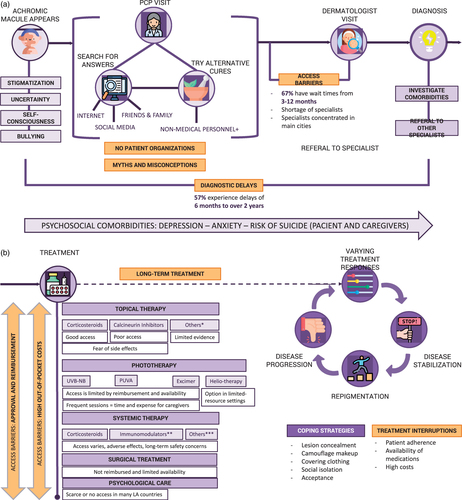
Table 2. Access to vitiligo treatment as reported by dermatologists in LA.
Table 3. Vitiligo perception in LA.
Figure 3. Typical period elapsed from referral to appointment with a dermatologist in Latin America.
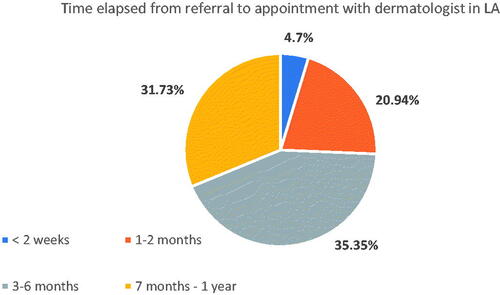
Table 4. Diagnosis and use of clinimetric tools for vitiligo in Latin America.
Data availability statement
This is a narrative review, with results taken from the literature and professional experience of the panel. The data from the survey is available from the corresponding author.
Box 1. Recommendations to improve the landscape of vitiligo in Latin America.
CREATE REGIONAL DISEASE AWARENESS
Recognize vitiligo as a high-impact chronic and systemic disease requiring dermatological management and multidisciplinary care for psychosocial consequences and comorbidities.
Develop widespread awareness campaigns to educate the public on the non-contagious nature of the condition, advocate inclusivity, and fight discrimination and stigmatization. Videos, disease days, celebrities, and social media are examples.
INCREASE PHYSICIAN TRAINING
Primary Care Level (PCPs and pediatricians)
^ Recognize vitiligo and be aware of possible comorbidities
^ Recognize appropriate referral situations and understand the importance of referring to a dermatologist to decrease diagnostic delays and allow for early intervention
^ Dispel misconceptions surrounding vitiligo, including that it is untreatable
Dermatologists
^ Obtain a complete medical history and classify the disease based on its clinical characteristics (Citation7)
^ Carry out a differential diagnosis from other entities that lead to hypopigmentation (Citation8)
^ Actively investigate mental health impact and other comorbidities to involve the necessary specialists to provide a holistic approach posteriorly
^ Use clinimetric instruments to assess the impact on QoL and disease severity, as they allow objectivity in evaluating progression and treatment response. Using apps available for mobile phones may facilitate the use of these tools
^ Ensure adequate follow-up and reevaluation of disease progression and impact on QoL continuously throughout the disease course to guide treatment decisions
^ Provide comprehensive education to patients and caregivers on the disease course, proper care, and preventive measures, and create realistic treatment expectations.
ADDRESS MALDISTRIBUTION OF RESOURCES AND SPECIALISTS
Create job opportunities for dermatologists within public healthcare systems and provide incentives to work in non-central cities in need of specialists
Teledermatology can be implemented as a tool to increase access to specialized care in distant and rural areas when in-person visits are not an option (Citation62,Citation63). It can potentially be a tool for the early detection and intervention of vitiligo (Citation9)
Increase local training opportunities for aspiring dermatologists
INCREASE ACCESS TO VITILIGO MANAGEMENT
Ensure continuous access to multidisciplinary care and follow-up
Ensure continuous access and reimbursement of indicated treatments, psychosocial support, and complementary measures
DEVELOP NATIONAL OR REGIONAL CPG
Develop CPG for vitiligo to promote evidence-based and standardized care through collaboration between medical societies, government, and academia. If this is not possible in the short-to-medium term, each country’s leading medical society should recommend an international guideline to adopt.
CREATE PATIENT ORGANIZATIONS
Create an official PO dedicated to advocating for vitiligo to be recognized as a chronic disease, providing peer support, informing, and advising its members on disease-related issues, advocating for treatment approvals and reimbursement, and sensitizing society on the
GENERATE LOCAL DATA
Encourage local and regional research regarding vitiligo epidemiology, patient outcomes, disease course, disease burden, impact on QoL, and genetic, environmental, and immunologic dynamics.

